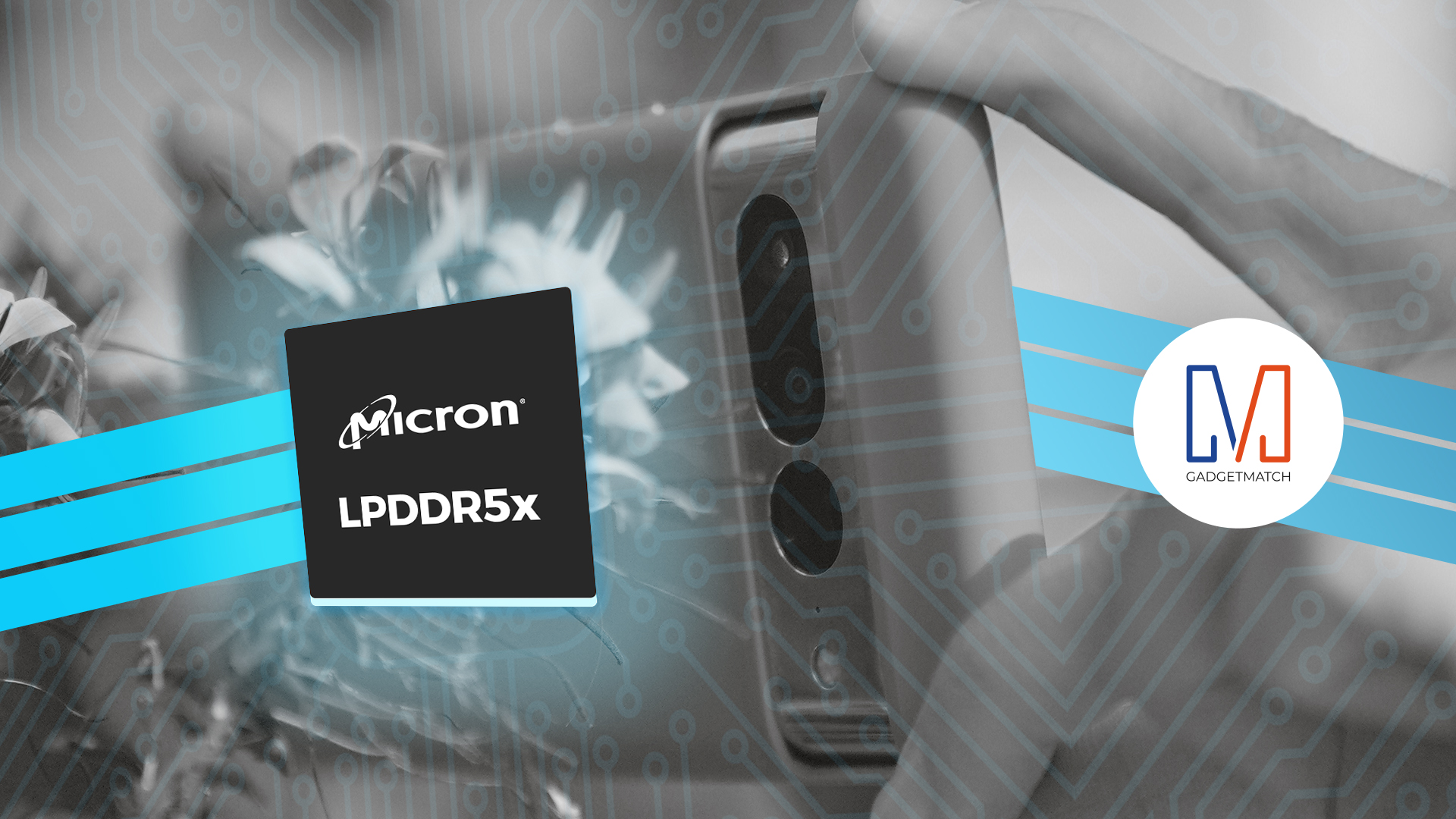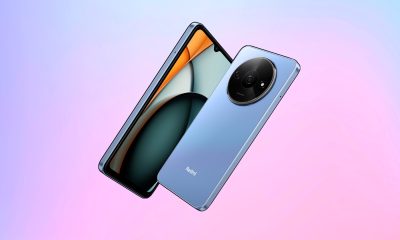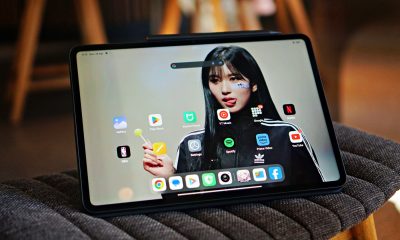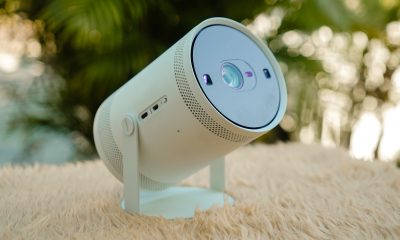Explainers
Explaining smartphone display refresh rates
Are they really any different from PC displays?

Smartphones, little by little, are turning into mini-PCs with the features that come with it. From browsing on social media to playing video games, technology is slowly adopting a more “on-the-go” lifestyle. Recently, smartphones have acquired another feature that your own desktop or laptop already has.
Some of the recently released premium and gaming smartphones now come with displays having their own dedicated refresh rate. Refresh rates aren’t new, but to see it on a compact device has a lot of people wondering. How different or similar is it to a PC’s refresh rate? And is it actually something good to have?
A crash course on refresh rates
A display’s refresh rate, basically is the number of times your display updates every second. Your screen usually takes a few seconds to just a second to load new images, depending on that rate. For example, a 60Hz refresh rate means that in one second, any image on your display is refreshed 60 times. Your eyes wouldn’t catch it fast enough, but that’s how your display works.
For most PC displays, the default is at 60Hz with companies releasing displays that range up to 240Hz. You mostly see this in displays fit for gaming purposes, since gamers prefer the higher refresh rate for improved performance. If you’re someone who mostly likes to watch movies, it really doesn’t matter how high the refresh rate is.
Note that this is entirely different from frame rates, in that these show how many images are produced within a second. Although, having a high refresh rate allows you to perform a lot better because it is optimized for higher frame rates. That’s why you see some gamers complain about playing on a 60Hz display.
Transitioning to a smartphone near you
Eventually, the concept of amping up a refresh rate will reach the world of smartphones. In fact, the OnePlus 7 Pro was actually the first mainstream smartphone to have a display with a 90Hz refresh rate. Most smartphones, even budget ones, have displays built with a 60Hz refresh rate. Something about it just makes you scroll through your phone without feeling too dizzy, unless you scroll too fast.
Premium smartphones mostly incorporate either a 90Hz or 120Hz refresh rate for a smoother UI experience. With higher refresh rates, scrolling through your phone feels a lot smoother without risking an eye sore. Of course, these smartphones do cost significantly more than your average, everyday smartphone.
Apart from premium smartphones, gaming smartphones have also incorporated higher than 60Hz refresh rates. Phones like the Razer Phone 2 and the ASUS ROG Phone 2 both come with a 120Hz refresh rate to suit mobile gamers, especially FPS (first-person shooter) gamers. With these higher refresh rates, mobile gamers see clearer images with less motion blur involved.
Do you really need all the hertz?
That begs the question: what do you need a high refresh rate screen for? When you use a PC, 60Hz is already good for most tasks and games. Trying to go for higher refresh rates usually means that you’re doing a lot more than the ordinary. Tasks such as heavy-duty data analytics or hardcore gaming are optimal for higher refresh rates.
The same logic works for smartphone displays, except on a smaller screen size. A lot of what you can do, you’re able to do so on 60Hz displays. If you’re just using your phone to browse social media, watch Netflix on the daily, and play games casually, you don’t need anything higher. Although, it is a premium to have if you want buttery smooth software.
If you play games competitively, you would prefer higher refresh rates just like in gaming monitors. Higher refresh rates allow you to perform at an optimal level when going for higher frame rates. We’re talking close to no image tearing or motion blur when you play PUBG Mobile or Call of Duty. While you can perform well at the default 60Hz, going for a 90Hz or 120Hz ideally makes the experience better.
Some final thoughts
Smartphone display refresh rates have always been a part of the technology. These displays were built in a way that everyone can benefit from them. It’s only fairly recently that smartphone companies came up with a way to make the experience a lot smoother. Hence, smartphones started incorporating higher refresh rates.
It almost feels like having that high refresh rate is a premium, given only select smartphones have it. But it’s a premium that you don’t really need unless you have a good reason to. Apart from the cost of experiencing it, it really depends on what you plan to do with your smartphone.
At the end of the day, it’s better to ask yourself if it’s a feature worth getting. If it’s something you feel you can’t live without, by all means, right?


It’s that time of the year again!
Since 2020, Samsung has equipped the Galaxy S20 Ultra with an ultra-fast 45W fast-charging speed compared to the Galaxy S10+‘s measly 15W charging standard. Four years after, 45W still remained on the Galaxy S24 Ultra.
For three consecutive years, Michael Josh has conducted a dedicated charge test to know whether its 45W “Super Fast Charging” works as promised on the latest line of Samsung’s Galaxy flagships. The Galaxy S24 Ultra isn’t an exemption to that.
Curious to know? Find out in our Galaxy S24 Ultra and Galaxy S24+ Charge Test.
Explainers
ChatGPT Explained: Should we be scared of AI?
Will the talking robot take over the world?

Back in the earlier days of the internet, an emerging but short-lived trend involved chatbots who could generate conversation with whomever it talked to. Does this sound familiar? Today, a similar phenomenon is creating a lot of waves online, headed by the infamous ChatGPT. The exceedingly popular ChatGPT is turning heads out of fear that the technology will eventually upend society and eradicate a lot of jobs.
But what exactly is ChatGPT? How is it different from language programs in the past? Is the world right to worry about them?
On the rise of language learning
ChatGPT is hardly the first software to inexplicably generate comprehensible dialogue without human intervention. Decades ago, the internet hosted rudimentary versions of today’s chatbot technology. The concept is somewhat similar, though. The early versions relied on a database of responses from human users. If you asked about coffee, for example, the answer you get will likely come from the logs of another user who talked about coffee in the past.
Because the system was imperfect in its infancy, part of the appeal was trying to get the software to fumble a conversation. However, if it did mess up, you can count on it asking you what it should have said. The next time someone asks the same question, the software might mirror what you said, creating a learning process between the software and the user.
Today, chatbots — meaning those usually used by businesses today — operate in the same way. If a customer comes with a query, the software will rely on a set of responses to most appropriately address the user’s problem. If the software can’t come up with a solution, the ball usually gets passed on to a human consultant.
Is ChatGPT just another chatbot?
Though the label certainly gets thrown around, ChatGPT isn’t strictly a chatbot. Instead, the software uses GPT-3.5, a specific language model created by OpenAI. Whereas early and more rudimentary versions of the same technology can already store an unbelievable amount of information in its memory, ChatGPT can analyze billions of words and the relationship between them.
Further, OpenAI extensively trains the software, ensuring that comprehension and grammar can live up to today’s standards. The learning is supervised. In fact, the company even has a makeshift reward system to ensure that the software puts out the most appropriate response. With users also contributing to the software’s learning process, ChatGPT is quickly emerging as a powerhouse for the technology.
The results speak for themselves. While users can generate simple conversations with the software, ChatGPT can just as easily answer more extensive queries with lengthier responses. If you ask it to create an essay about Christopher Columbus, for example, it can write a lengthy piece that can easily fool a casual reader. It can even handle more speculative queries. In a sample published by the developer, ChatGPT can answer what would happen if Columbus discovered America in 2015.
What’s it good for?
Based solely on what the software can do, ChatGPT can find its purpose in today’s world. The software can improve voice assistants and chatbots all over the internet. It can make big strides in the world of automation, enabling a more responsive interface between user and software.
On a more human aspect, the software can also handle more professional jobs with simpler prompts such as those involving simple marketing copy. It can help with more ephemeral research efforts, allowing users to get simple answers for otherwise complex questions.
And, on a more technical side, ChatGPT can reportedly analyze and detect what’s wrong with a piece of coding. With the software, developers can use ChatGPT to potentially repair code without having to pore over every single line. Allowing a powerful tool to inspect code speaks volumes for a lot of applications all over the world including smart vehicles and technical machinery.
However, as with every piece of technology, users will always find a way to use something beyond what it was originally designed for. ChatGPT is now changing the world of education as students are using the software to do their homework for them. Though a lot of the sample texts look like they can fool only lower levels of education, a Wharton business school professor (via Business Insider) recently stated that he would have been fooled by a ChatGPT essay, grading a sample with a passable grade of B or B-.
Should we be scared of ChatGPT?
ChatGPT is undoubtedly rocking the world of education. While some schools have banned the technology outright, others are debating on the software’s impact on how schools are taught. Since ChatGPT deals out more factual information, could education reinvent itself to teach more personal, tailored learning, rather than just the ability to spit out memorized facts. (“Factual” might even be an exaggeration. CNET, which recently experimented with AI-written articles, discovered a plethora of errors from using the software.)
Now, education isn’t the only world in peril. The creative industry is facing an extreme challenge wherein ChatGPT can potentially cause workers their jobs. Though the danger certainly seems real, the limitations of technology are also real. ChatGPT can create comprehensible text that can fool a human, but it will likely stumble with conceptualization.
A piece of software is just software. Even if it can write an essay about existentialism, it cannot think of the concept metaphysically. In the same way, even if it can show you a photo of a parrot, it cannot think of that photo as anything but a pattern of pixels. To a language learning software, words don’t mean anything else besides their relationship with each other. It’s the same thought process as a dog learning to run to its human when its name is called. The dog doesn’t know that you just said its name (or even the mere concept of a name); it just knows to do a certain action after hearing a specific sound.
Can ChatGPT change the world? Overall, the jury is still out, but it’s unlikely that a piece of learning software can do much to replace human-centric work. Regardless, it’s important to think of how ChatGPT can improve (or detriment) humanity.
Like with other supposedly dangerous technology, the world of technology is a Pandora’s box. We can never put the genie back into the bottle. Once it’s out, it’s out. Instead of worrying about how technology can destroy the world, the more appropriate response is to figure out how it can better humanity without sacrificing anyone’s wellbeing in the process.

When you’re looking to buy a new device, which specs should you pay attention to? Which upgrades should you consider?
In this video instead of reviewing the latest new smartphone, we’re going to talk about its unsung hero: RAM.
We partnered with @MicronTech to help you understand all the magical things that you get to do on your smartphone thanks to internal memory and storage.
To find out more about Micron’s mobile memory and storage solutions and how they’re bringing mobile innovation to life, visit https://www.micron.com/solutions/mobile or watch our explainer video.
-

 Reviews1 week ago
Reviews1 week agorealme 12 5G review: It was enchanting to meet you
-

 Reviews4 days ago
Reviews4 days agoOnePlus 12R review: Making sense of OnePlus’ latest flagship
-

 Buyer's Guide2 weeks ago
Buyer's Guide2 weeks ago2024 Samsung TV: Buyer’s Guide
-

 Reviews2 weeks ago
Reviews2 weeks agoJBL Soundgear Sense review: Make every run magical
-

 Smartphones2 days ago
Smartphones2 days agoHuawei Pura 70 Pro Unboxing and First Impressions
-

 Reviews2 weeks ago
Reviews2 weeks agoChallengers review: A thrilling drama wrapped as a tennis anime
-

 News1 week ago
News1 week agoXiaomi Redmi A3 Philippine pricing, availability
-

 Smartphones1 week ago
Smartphones1 week agoInfinix NOTE 40 Pro+ 5G: Philippine pricing, availability



















